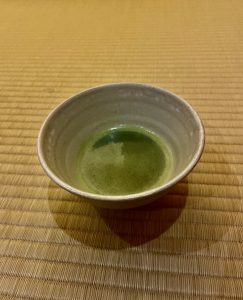茶の湯たび
“Chanoyu” trip.
お知らせ News
Noh and the way of tea are entertainments which is deeply connected in Nara in the 14th century.

The origin of Noh is unknown but it is thought it derived from Gigaku or Sangaku which came from peninsula and Tang dynasty in the 7th century. Sangaku had infused with Japanese original entertainment and became Sarugaku which had been popular among common people and were offered at temples and shrines. In the middle times, the temples and shrines such as Kohfukuji temple and Kasuga Taisha shrine had its own entertainment team and they were called Yamato (the ancient name of Nara) Sarugaku Yonza (literally meaning 4 teams).
One of the teams, Yuukiza, had Kanami and Zeami who were well-known as the founders of Noh performances and beloved by Ashikaga Yoshimitsu (the 3rd Shogunate of Muromachi in the 14th century).
The others were also origins of representative Noh performances today, Kongo, Hosho and Konparu.
The way of tea also derived from customs of drinking tea which came from Tang dynasty in the 8th century.
Then in the 13th century, Matcha and Zen philosophy were introduced with Chinese articles from Tang dynasty which had grabbed the interests of lords, warriors and intellectuals.
In the 14th -16th century, Ashikaga shogunate preferred the tea style with Chinese articles but common people preferred simply enjoying a bowl of tea in front of the temples and shrines.
They were integrated to make it simple and unique tea utensils were used to entertain the guests to make the tea in front of them.
The way was called Wabi-Cha style which was originated by Shuko who was a monk in Nara and which was developed by Sen Rikyu in Sakai, Osaka, very close region to Nara.